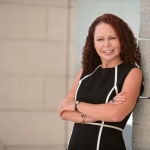
Meredith Frazier Britt
The Intersection of Public Art and City Planning
Posted by Sep 04, 2014

Meredith Frazier Britt
 Meredith Frazier Britt
Meredith Frazier Britt
I am a city planner who can’t stay away from public art. I just finished my capstone project for my master’s in city and regional planning at Georgia Tech, and true to form, I studied commonalities between public art and planning goals in the Atlanta region.
My interest in public art began with art history in college. I trace it to a flashbulb memory of a beloved professor snapping to a slide of Claes Oldenburg’s imagined (but never constructed) intersection-blocking monument in New York City. I loved that this piece would so fully obstruct the activity of city life, interrupting our regular routes of walking and driving, imposing its message on our thoughts.
Read More












